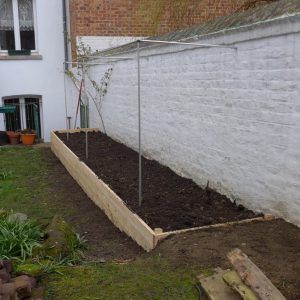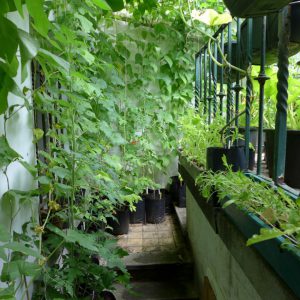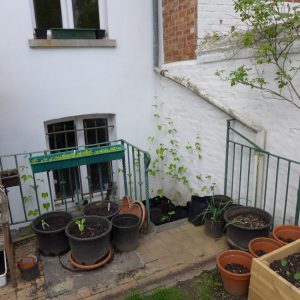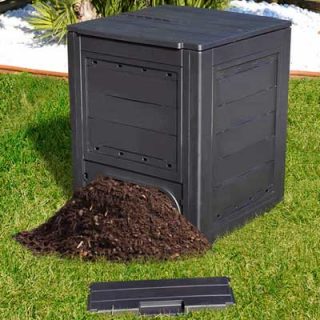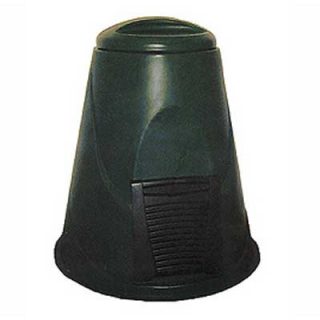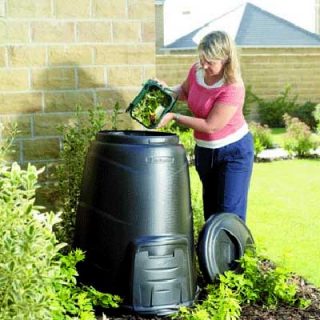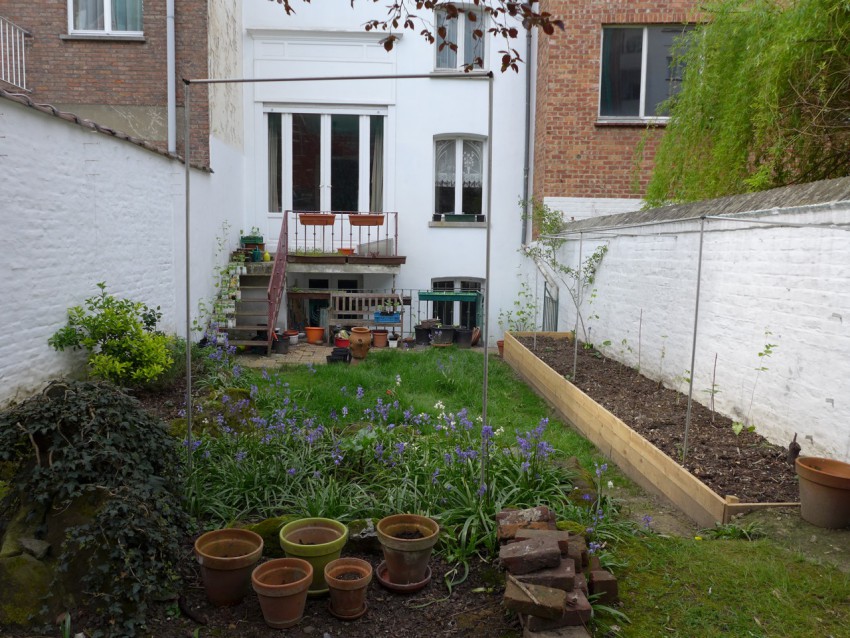
This garden is very much a summer garden, designed to produce a lot of vegetables over the summer and early fall and then put to rest over the winter months. Working with the limited space it is important not to overtax the soil and allow a winter rest period for the garden (and the gardener).
In the summer the garden becomes a jungle of beans, tomatoes, cucumbers and herbs. At the end of the season when the last fruits are removed all of this greenery is then composted for use in feeding the beds next year. This cycling of greenery, mixed with kitchen waste provides a rich soil base year after year.
The beans are excellent nitrogen fixers so even the soil in containers can be recycled into the main beds over winter, along with some natural feed. Container soil can also be stored and composted in a plastic bin over winter, turned a few times so it is ready for use again in the spring mixed with fresh compost.
It is important to remove completely any diseased plant material. This year’s blight outbreak has been difficult so much of the tomato plant remains will be removed. It is also worth considering emptying the garden of food sources for slugs over the winter in a vain attempt to starve them out of the garden.
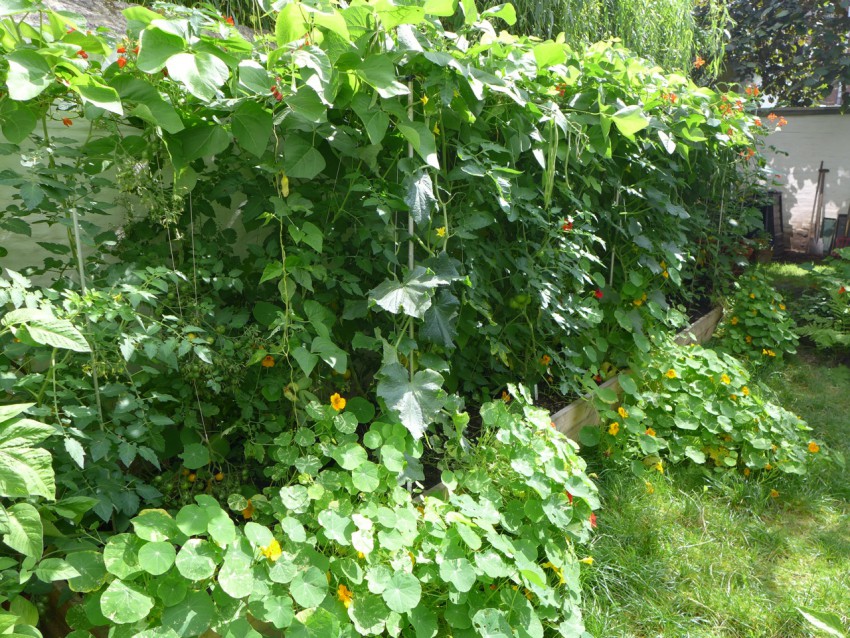
Gardeners, as they get older, recognise that growing your own compost material is just as much a bonus of gardening as growing healthy plants and fruit. In this way everything green in the garden is a valuable resource for improving soil and building up the garden’s health for next year.
